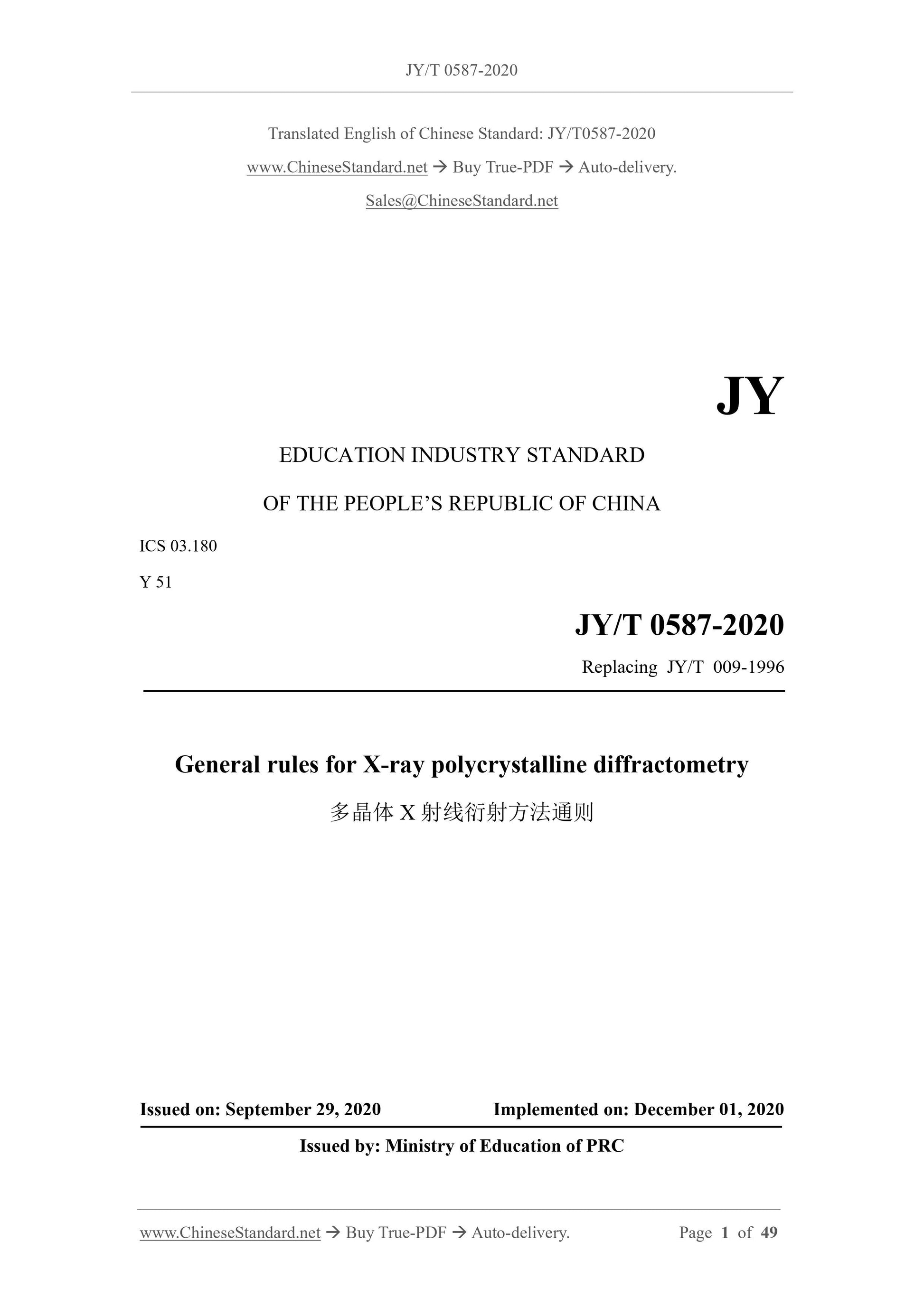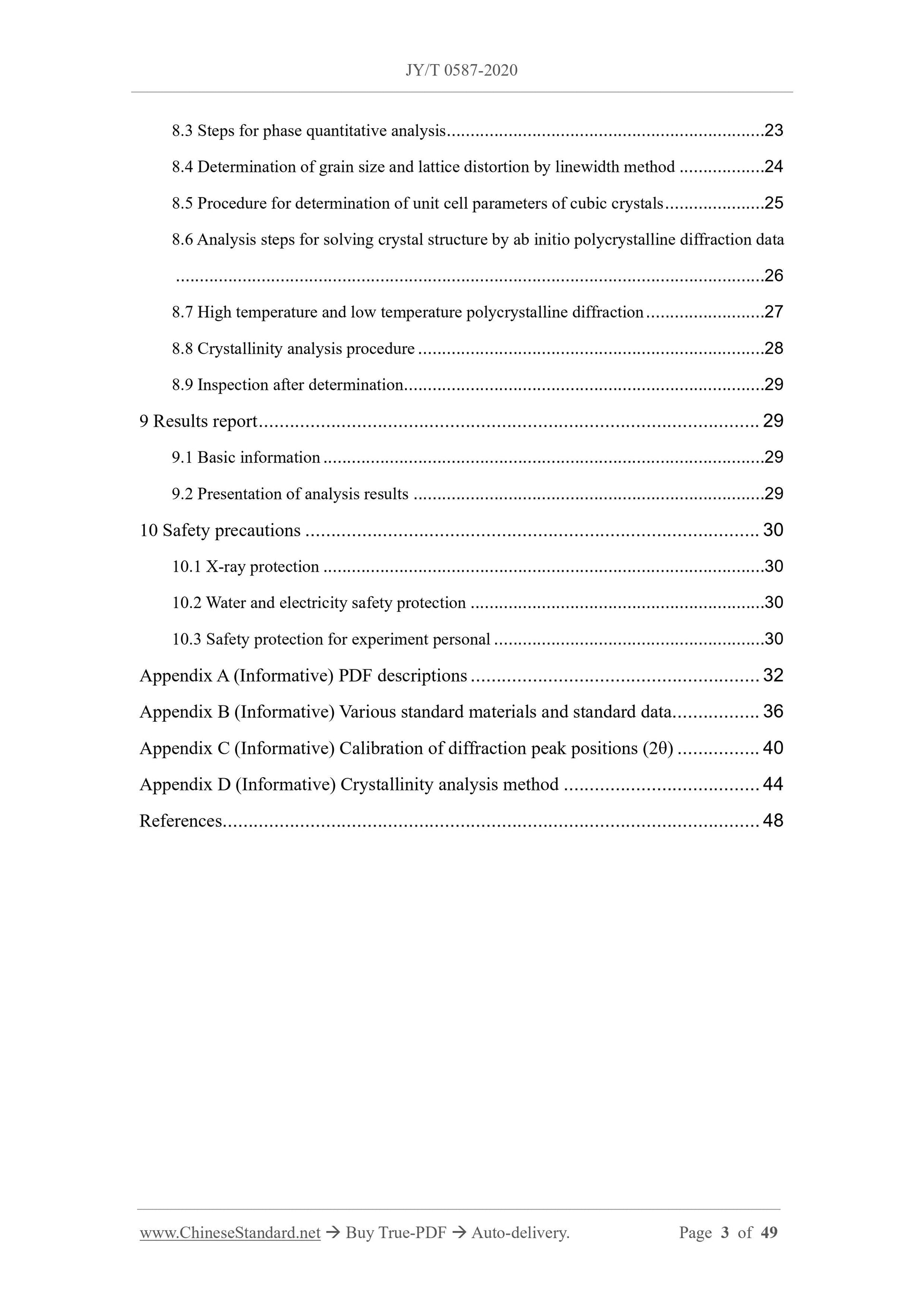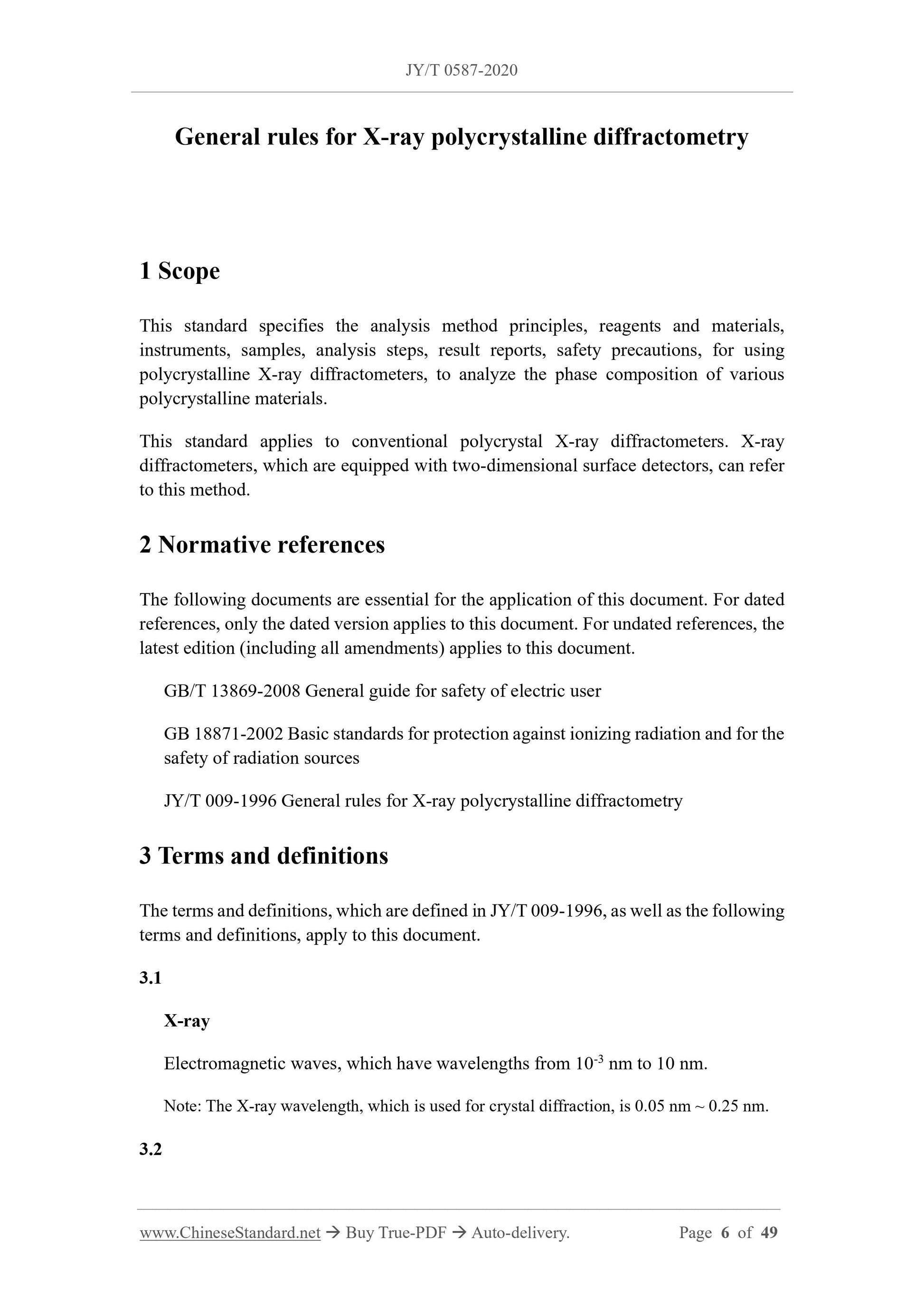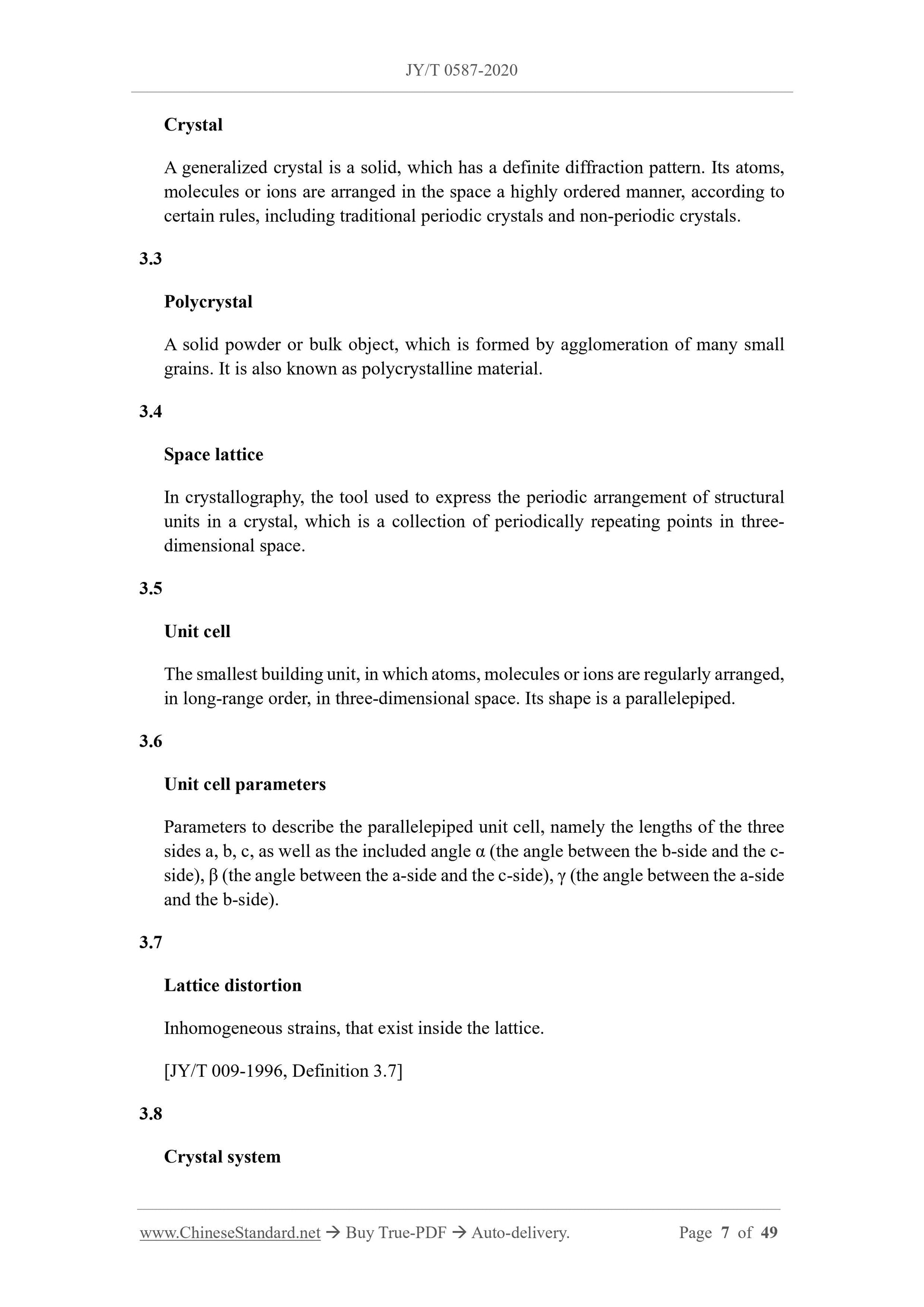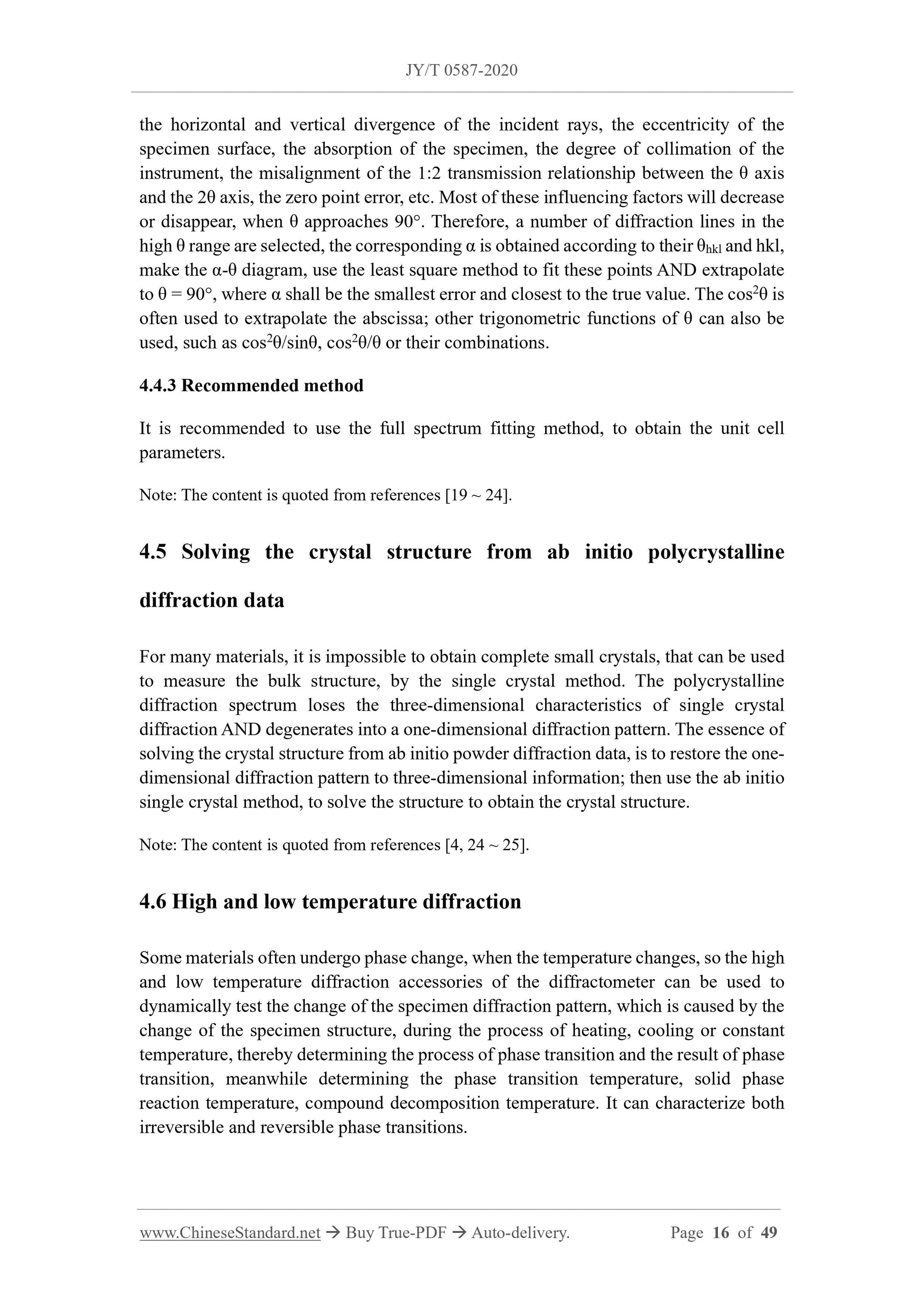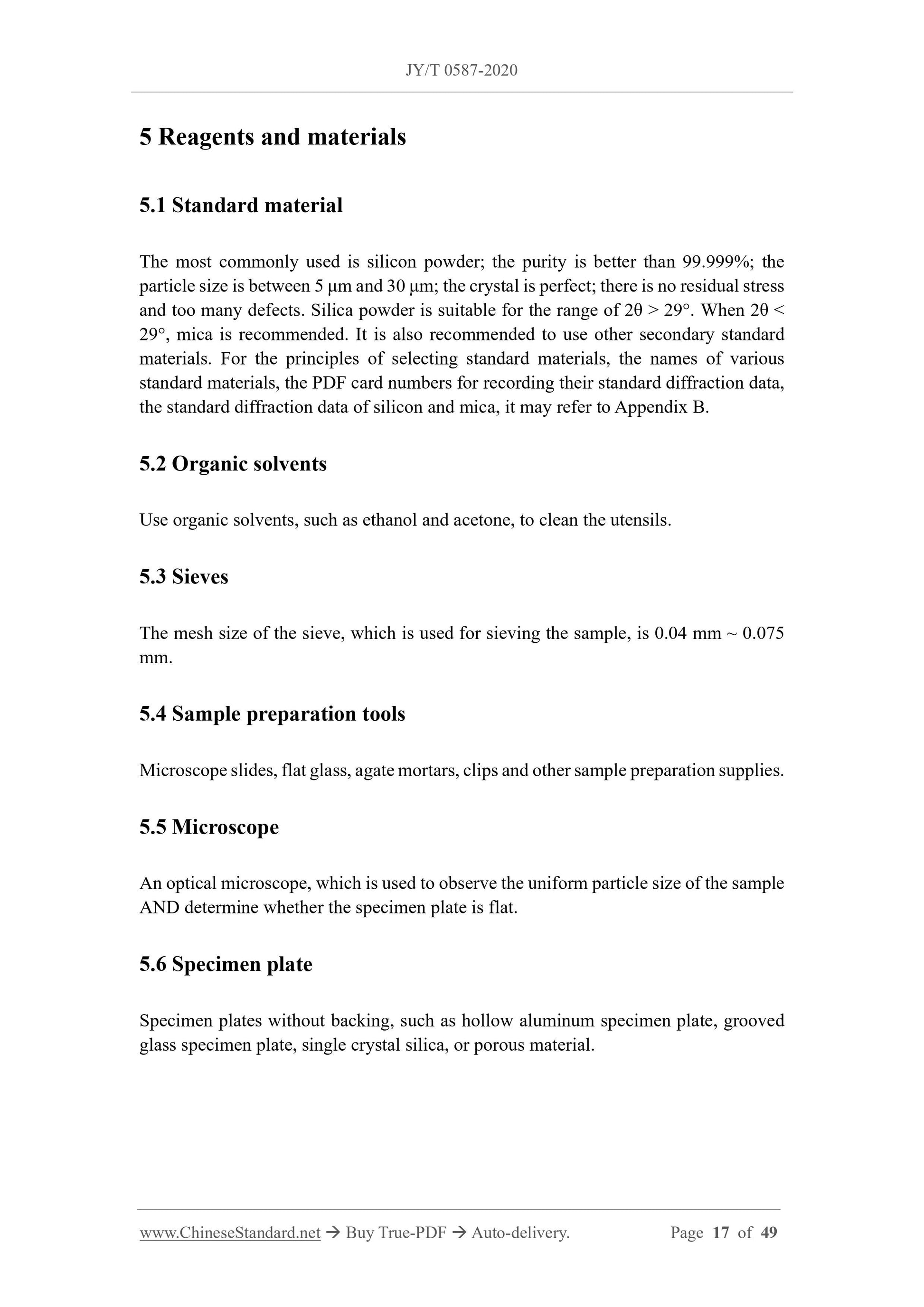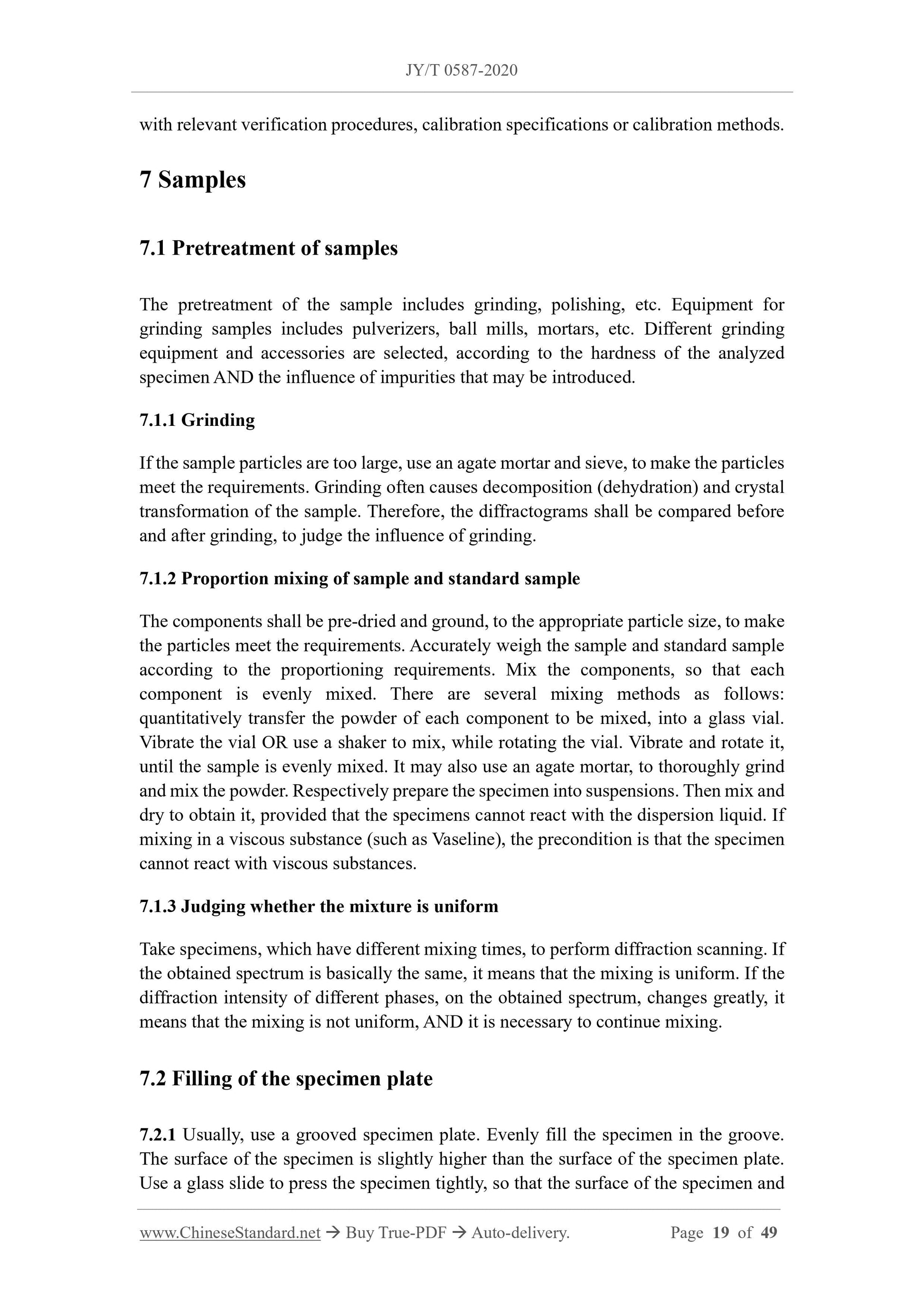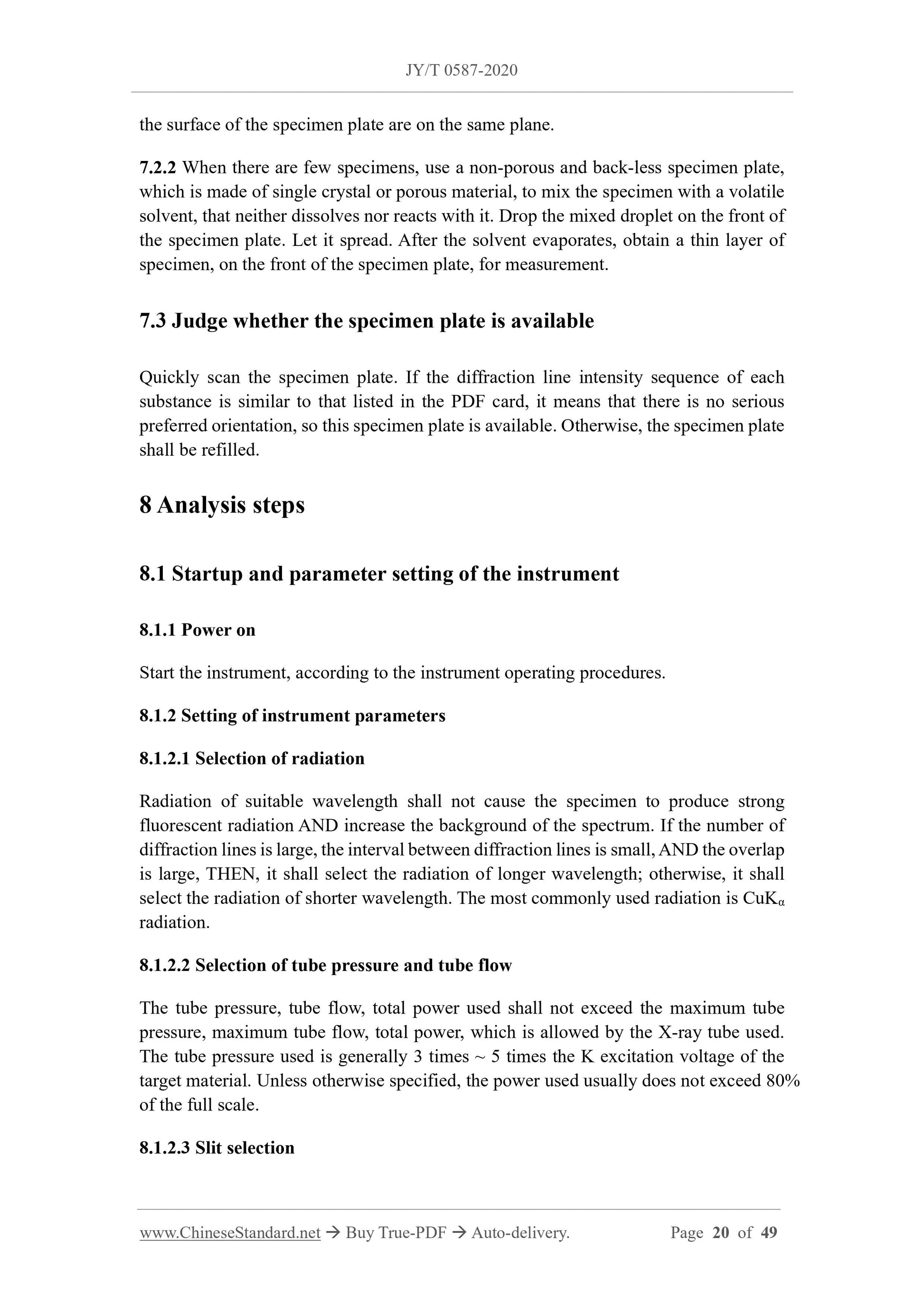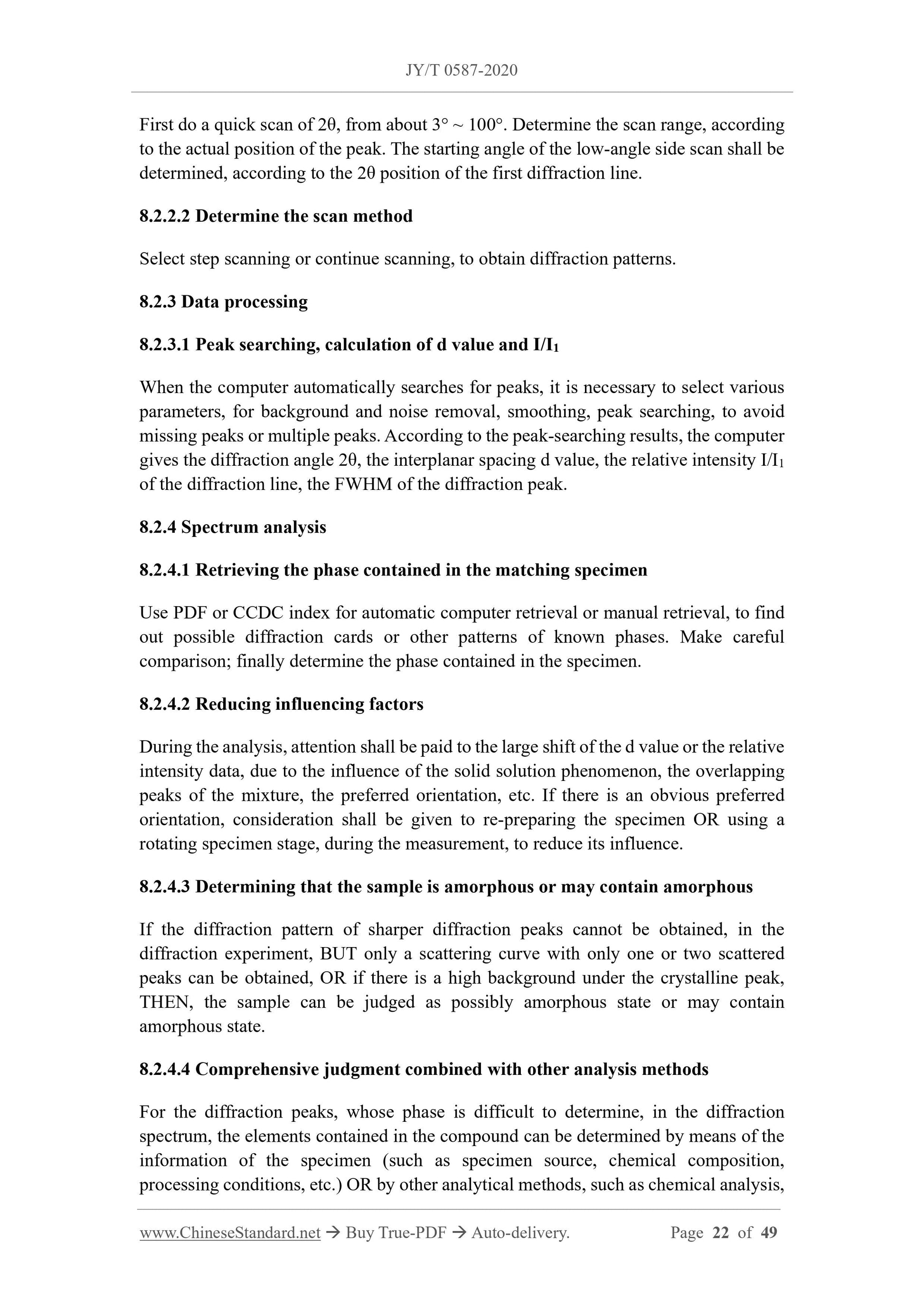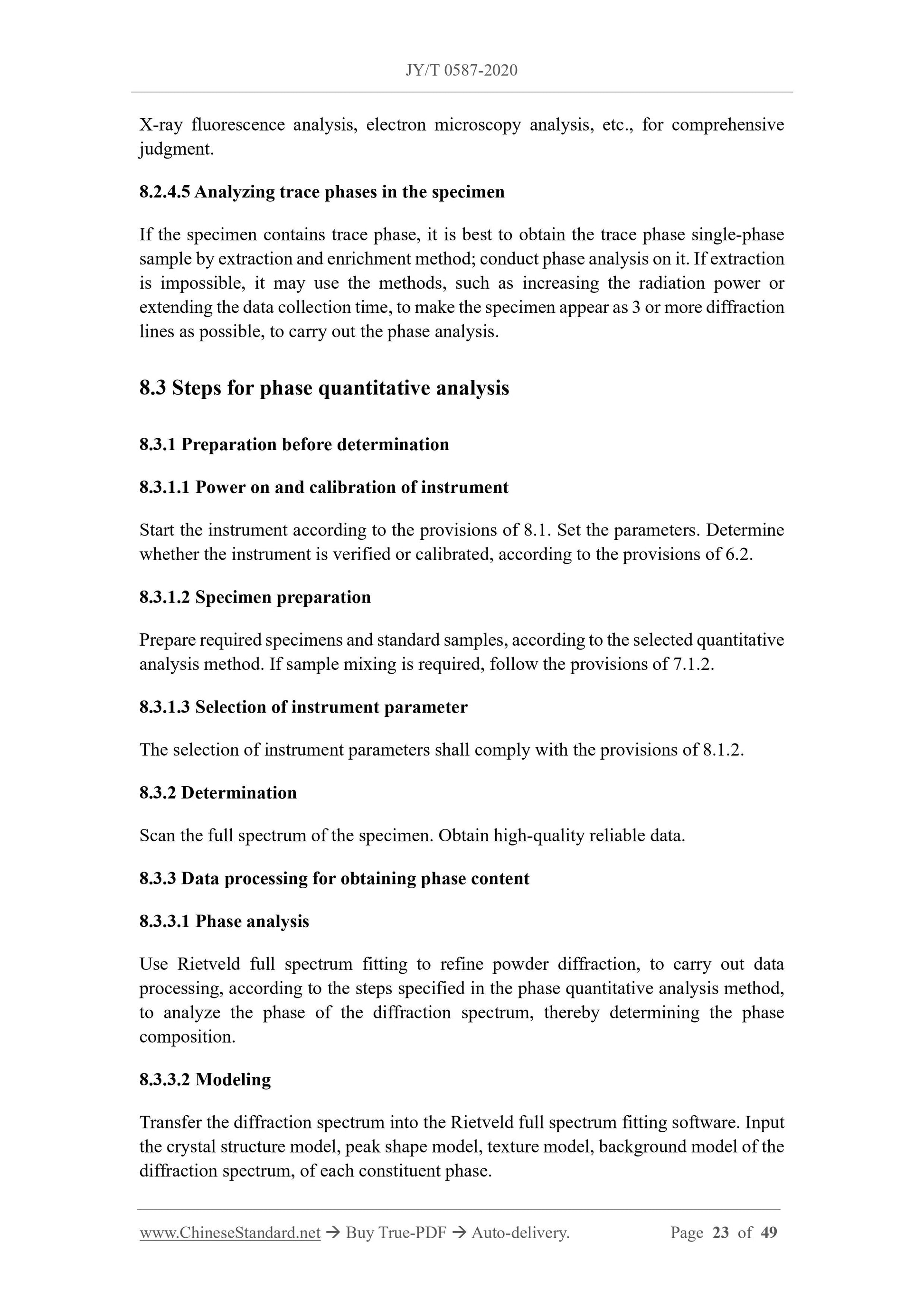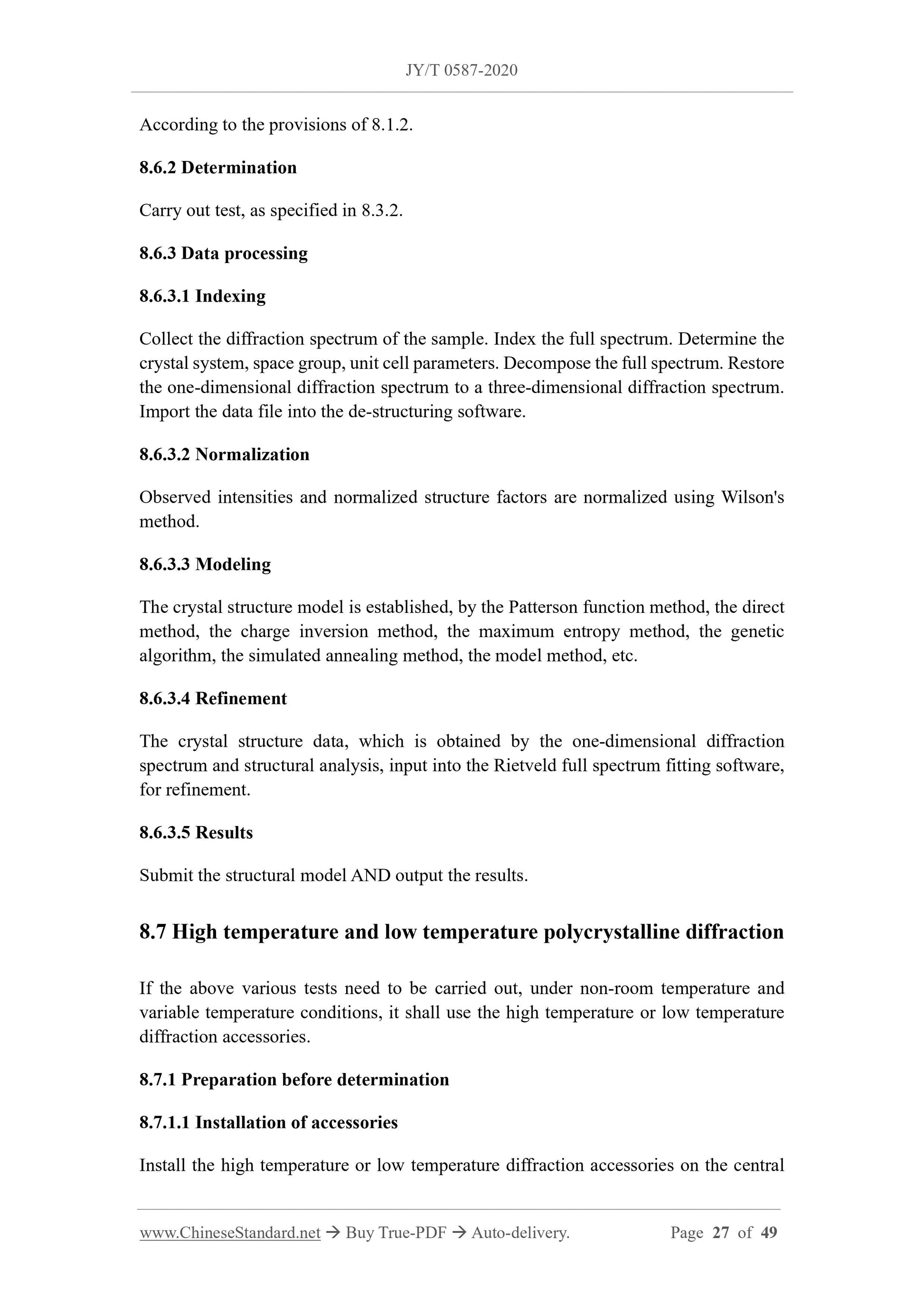1
/
of
12
www.ChineseStandard.us -- Field Test Asia Pte. Ltd.
JY/T 0587-2020 English PDF (JY/T0587-2020)
JY/T 0587-2020 English PDF (JY/T0587-2020)
Regular price
$485.00
Regular price
Sale price
$485.00
Unit price
/
per
Shipping calculated at checkout.
Couldn't load pickup availability
JY/T 0587-2020: General rules for X-ray polycrystalline diffractometry
Delivery: 9 seconds. Download (and Email) true-PDF + Invoice.Get Quotation: Click JY/T 0587-2020 (Self-service in 1-minute)
Newer / historical versions: JY/T 0587-2020
Preview True-PDF
Scope
This standard specifies the analysis method principles, reagents and materials,instruments, samples, analysis steps, result reports, safety precautions, for using
polycrystalline X-ray diffractometers, to analyze the phase composition of various
polycrystalline materials.
This standard applies to conventional polycrystal X-ray diffractometers. X-ray
diffractometers, which are equipped with two-dimensional surface detectors, can refer
to this method.
Basic Data
| Standard ID | JY/T 0587-2020 (JY/T0587-2020) |
| Description (Translated English) | General rules for X-ray polycrystalline diffractometry |
| Sector / Industry | Education Industry Standard (Recommended) |
| Classification of Chinese Standard | Y51 |
| Classification of International Standard | 03.180 |
| Word Count Estimation | 33,395 |
| Date of Issue | 2020-09-29 |
| Date of Implementation | 2020-12-01 |
| Issuing agency(ies) | Ministry of Education of the People's Republic of China |
Share












